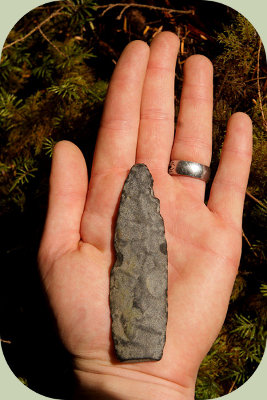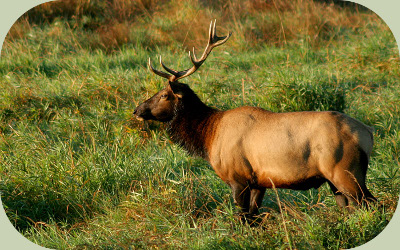Northwest Coast Native Americans: Survival Life-ways

by Filip Tkaczyk
For many generations, Northwest coast Native Americans have practiced skills of survival and wilderness living that was deeply connected with the rhythms of the land around them. For anyone who is serious about studying survival skills, it is incredibly useful to look to the wisdom and hard earned knowledge of the local peoples.
Northwest Coast Native Americans:
Common Resources
The abundance and usefulness of certain natural resources was a common element amongst many Northwest coast Native Peoples. These include western red cedar, salmon, deer, elk, huckleberry, wapato and camas. It was the incredible knowledge of the local ecology that allowed many different tribes to thrive along the northwest coast.
The Tree of Life
More than any other plant, the western red cedar tree (Thuja plicata), provided an incredible source of materials for almost everything needed in life. The bark of the cedar tree was used for mats, baskets, clothing, towels, diapers and blankets. The boughs of the tree were used to make incense for ceremony, twisted into rope as well as used for medicine and while bathing. The wood of this versatile tree was used by many Northwest Coast Native Americans for canoes, plank houses, carvings, totem poles, drums and storage boxes. In addition shredded bark makes an excellent tinder bundle and the wood makes great spindles and fire boards for friction fires.

Salmon
Fish was a major staple of Northwest Coast Native Peoples, and a variety of different kinds of fish were harvested. Salmon was the most important and the seasonal arrival of the salmon was reason to celebrate. A good harvest of salmon in the late spring through fall provided for long term survival through the leaner times during the winter. Salmon were smoked or sun dried to help preserve them. They were caught using a variety of methods including weirs, dip nets, spears and gill nets.
Be More Prepared For Your Next Outdoor Adventure!

Don't leave home without knowing these six essential survival skills. Our free survival mini guide reveals the strategies of:
- Shelter & fire to prevent the number one cause of death
- Obtaining clean water to avoid life-threatening dehydration
- Common wild survival foods and other critical skills!

Hunting
The Northwest Coast Native Americans relied on hoofed animals such as black-tailed deer, elk, mountain goat and bighorn sheep as sources of food and materials. All parts of these animals were used for a variety of purposes: meat for food, tallow for medicine, sinew for cordage, bones for tools, hooves for rattles, horns for bowls or spoons, antlers for wedges or flint-knapping tools and hides for clothing or even armor.

Stone Tools
Stone had a wide variety of uses, often involving hunting or food preparation. Stones were into mortar and pestles, ground or flint-knapped into hunting points or knives, and as weights for fishing lines or fishing nets. Obsidian was locally one of the favorite stones for making points and knives, but was rare and was usually traded for from southern tribes. Basalt was one of the most common fine-grained stones and was used to make workable knives and hunting points. Slate was also ground down into workable hunting points and fish knives.
Masters of Survival
All tribes of Native Americans were true masters of survival. They lived lives intimately connected to the land and the activities of their lives ran in tune with the seasons. Some tribes continue to practice some of the same skills they used for thousands of years. Their deep and intimate knowledge of the local ecology and their skill and creativity made living in the Pacific Northwest coast region possible.
Additional Resources:
First Peoples of Canada
For more details on Northwest Coast Native Americans, check out the excellent book, The People of Cascadia: Pacific Northwest Native American History by Heidi Bohan.
For training in survival skills, check out our Wilderness Courses.
Return from Northwest Coast Native Americans to Survival Articles
Is The Essential Wilderness Survival Skills Course Right for You? Take the "Online Survival Training Readiness" Quiz
See for yourself if this eye-opening course is a good fit for you. It takes just a few minutes! Get your Survival Training Readiness Score Now!

Grow Your Outdoor Skills! Get monthly updates on new wilderness skills, upcoming courses, and special opportunities. Join the free Alderleaf eNews and as a welcome gift you'll get a copy of our Mini Survival Guide.

 The Six Keys to Survival: Get a free copy of our survival mini-guide and monthly tips!
The Six Keys to Survival: Get a free copy of our survival mini-guide and monthly tips!
Learn more